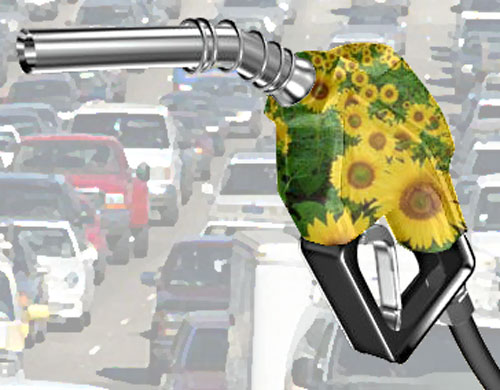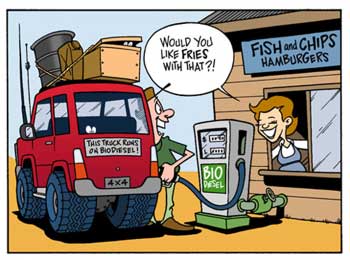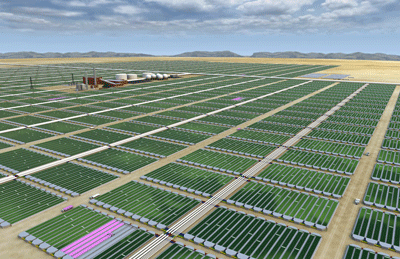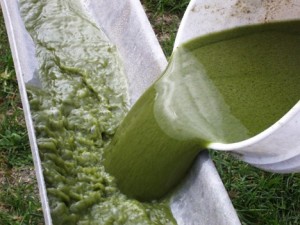Biodiesel from algae research and discussion topics

This could eventually lead to algae replacing petroleum as a source of fuel, they say.
They grow in unbelievable quantities in oceans, lakes and rivers throughout the world.
But the cost of creating fuel from them is a big problem.
This is the first economical way to produce biodiesel from algae oil,"
You need a much smaller factory, there are no water disposal costs and the process is considerably faster."
The solid catalyst has the big advantage that it can be used over and over again.

This means the process has low productivity, is labour-intensive and energy-intensive and generates waste.
It offers the highest yield feedstock for biodiesel and the most promising source for mass biodiesel production to replace transportation fuel in the United States."
His firm is now setting up a pilot programme to produce almost 1 million gallons of algae biodiesel a year.
The company could eventually produce up to 50 million gallons of algae biodiesel each year.
This means that smaller companies would not have to construct plants and the military could use the process in the field."
16-Mar-2009 09:00 ET
Oily algae
SALT LAKE CITY — Chemists today report the first process to turn algae oil into biodiesel that is "both economical and eco-friendly". This could eventually lead to algae replacing petroleum as a source of fuel, they say.
Supply is not a problem for algae. They grow in unbelievable quantities in oceans, lakes and rivers throughout the world.But the cost of creating fuel from them is a big problem.
Current methods of doing so are too expensive. But this new process is at least 40% cheaper than anything that could be done before, say the researchers at United Environment & Energy in Horseheads, NY.
 "This is the first economical way to produce biodiesel from algae oil," says lead researcher Ben Wen, vice president of UEE. "It costs much less than conventional processes because you need a much smaller factory, there are no water disposal costs and the process is considerably faster."
"This is the first economical way to produce biodiesel from algae oil," says lead researcher Ben Wen, vice president of UEE. "It costs much less than conventional processes because you need a much smaller factory, there are no water disposal costs and the process is considerably faster."
At the heart of the new process is a solid catalyst that the researchers have developed themselves, says Wen. Compared with the liquid catalysts that have been used until now to make algae oil the solid catalyst has the big advantage that it can be used over and over again.
It also allows the biodiesel to be made by a continuous flow process, compared to existing methods. These have to be stopped often so that the biodiesel and the liquid catalyst can be separated. This means the process has low productivity, is labour-intensive and energy-intensive and generates waste.
Wen estimates that algae can produce 100-300 times as much oil as soybeans for the same area of land. "It offers the highest yield feedstock for biodiesel and the most promising source for mass biodiesel production to replace transportation fuel in the United States."
His firm is now setting up a pilot programme to produce almost 1 million gallons of algae biodiesel a year. Depending on the size of the machinery and the plant, Wen says, the company could eventually produce up to 50 million gallons of algae biodiesel each year.
The solid catalyst continuous flow process can be adapted for mobile units, say the researchers. "This means that smaller companies would not have to construct plants and the military could use the process in the field."
Ben Wen, Ph.D., is vice president of United Environment & Energy LLC, in Horseheads, N.Y: b-wen@unitedee.com The poster Continuous flow fixed-bed biodiesel production from algae oil was presented on Wednesday, March 25, at the Salt Palace Convention Center, Hall 5 at the 237th American Chemical Society National Meeting & Exposition. The National Science Foundation funded Wen's research.
More help with words
| breed | cast | community | conference | contract |
| environment | fertile | frame | individual | journal |
| preserve | remains | rigid | shared | species |
| spine | structure | typical |
